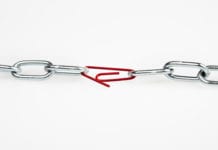Last year, Jeff Goins interviewed me on the subject of writing. I’m publishing the complete, unedited interview on the blog in three installments. Whether you are an author, a blogger, or someone who likes to post long notes on Facebook, I hope you will be inspired by the interview.
How long have you been writing, and how did you get started?
In the mid-90s, I became the host of what was known back then as internet “Bulletin Boards.” Bulletin Boards were the precursor to blogs today.
Every two weeks, I’d write a short article on a certain aspect of ecclesiology and post it on the Bulletin Board. People would comment on it and we’d have an engaging discussion (much like a blog).
As time went on, more and more people began asking me for the articles in printed form. At first, I would print them out on my computer and staple them together. Then someone suggested that I hire a printer to put them into a book. So I tried it.
In 2004, a Christian publisher became aware of my self-published stuff and made me an offer to publish it. Knowing that I would reach a much larger audience with a publisher, I accepted the offer. My first published book was The Untold Story of the New Testament Church.
Two years later, Tyndale House (via George Barna) wanted to publish my book, Pagan Christianity, and I agreed. Since then, I’ve published with Thomas Nelson, David C. Cook (Francis Chan’s publisher), and Zondervan (for Spanish editions). To date, I’ve written 10 books. Three are eBooks and seven are published by Christian publishers. I’ve also published many articles. People can view them all on my Mediography page.
Recently, I experimented with my first self-published Kindle project. Epic Jesus is the name of that work. It’s also in Spanish.
You’re the author of multiple books. Can you explain your process? How do you write a book? Do you have a regular routine?
Christopher Morley once said, “The most valuable writing habit I have is not to answer questions about my writing habits.” In like manner, Hemingway rarely talked about his writing habits, feeling it brought bad luck. However, he did leak them out here and there. And someone compiled a book from those leaks . . . which I happen to cherish.
So in the spirit of Hemingway, I’ll leak a bit here.
There are three different ways that I do it.
One way is to select a spoken message I’ve delivered in a conference, have it transcribed, and then shape it into written form. “Epic Jesus” is the most literal example of this process. (People can click here to hear the message and compare it to the eBook.)
From Eternity to Here is based on messages I delivered in five different conferences in the United States in 2005 and 2006. I did a great deal of editing on those transcribed messages to craft the book. But its origins were those talks given to live audiences.
Another way is to combine a series of articles I’ve written into a book. Revise Us Again is an example of this process. About 65% of that book is made up of previous articles I’ve written in different publications. The other 35% is new material. All the chapters are tied together by a common theme.
Still another way is to sit down and write a book from scratch. Reimagining Church, Finding Organic Church, Jesus Manifesto, and Pagan Christianity are all examples of this process. The last two were written with co-authors, Leonard Sweet and George Barna, respectively.
Regarding my routines, here’s how I typically work:
- First, I write a tentative Table of Contents. I usually end up modifying and rearranging it as I write the chapters. But the general framework stays pretty much the same. The Table of Contents is like a map that helps navigate me to where I’m going.
- Second, I begin writing the chapters. I don’t always write them in order. Instead, I go with what inspires me at the moment. This part of the process is like throwing a lob of clay onto a wheel. The clay is disorganized and without form; I just write my thoughts on the screen. It’s the raw material to work with later.
- Third, once I’ve gotten some clay on the wheel, the real work begins. This is where I shape, mold, add, remove, and re-write. For me, the art of writing is re-writing. I keep re-writing until something satisfactory emerges.
- Fourth, once all the chapters are in good form, I print them out and go through them with a red pen in hand—making edits, changes, removals, and additions. Reading the printed manuscript in hand is very different from reading it on the screen. Things I wouldn’t notice or see on the screen suddenly come to light.
- Fifth, I insert all the changes that I made on the manuscript with my red pen into the document on my computer. This is the part that I hate. It’s laborious and tedious. It reminds me of Peter De Vries’ famous words, “I love being a writer. What I can’t stand is the paperwork.” I wish I could hire someone to do this part of it, but honestly, they would never be able to read my hand-writing. (It’s a cut below chicken-scratch. I can’t decipher it myself sometimes!)
- Sixth, I go back and redo steps three, four, and five. Re-write, print out, edit with a red pen, insert edits into the document on the computer. When I’m thoroughly sick of re-writing the book, I wash my hands of it and hand it over to the editor. And herein do I fully resonate with the words of Winston Churchill:
“Writing a book is an adventure. To begin with, it is a toy and an amusement; then it becomes a mistress, and then it becomes a master, and then a tyrant. The last phase is that just as you are about to be reconciled to your servitude, you kill the monster, and fling him out to the public.”
Like Hemingway, I write best in the mornings. Between 5 am and noon. I’m also a plodder. I plod a little each day. Some days I’m highly motivated and can peel off thousands of words at one sitting. Other days I’m like James Joyce.
One day a friend of Joyce’s found the author hunched over his desk. The friend asked, “What’s wrong?” Joyce responded, “I’ve been working all day and have only written six words.” His friend said, “Six words is normal for you.” Joyce replied saying, “I know, but I don’t know what order to put them in!”
I concur with Gene Fowler who said, “Writing is easy; all you do is sit starting at a blank sheet of paper until the drops of blood form on your forehead.”
But my favorite quote of this type is by Red Smith: “There’s nothing to writing. All you do is sit down at a typewriter and open a vein.”
Some authors are regimented. They force themselves to write a certain amount of words each day. I tried to play that game and the uniform doesn’t fit. I write when I’m inspired. This is especially true for blog posts.
In fact, sometimes I’ll wake up in the middle of the night with an idea that’s burning in me. I’ll get out of bed and write an entire post at 3 am. I rarely do that with books, I’ve done it numerous times with blog posts (and interviews). Interestingly enough, it’s 4:18 am EST right now as I write these words.
I’ve listed the things that inspire me to write in a blog post.
Incidentally, I enjoy blogging more than writing books. Perhaps because it’s not as grueling.











